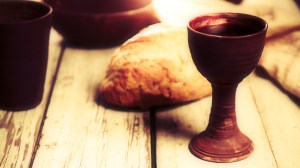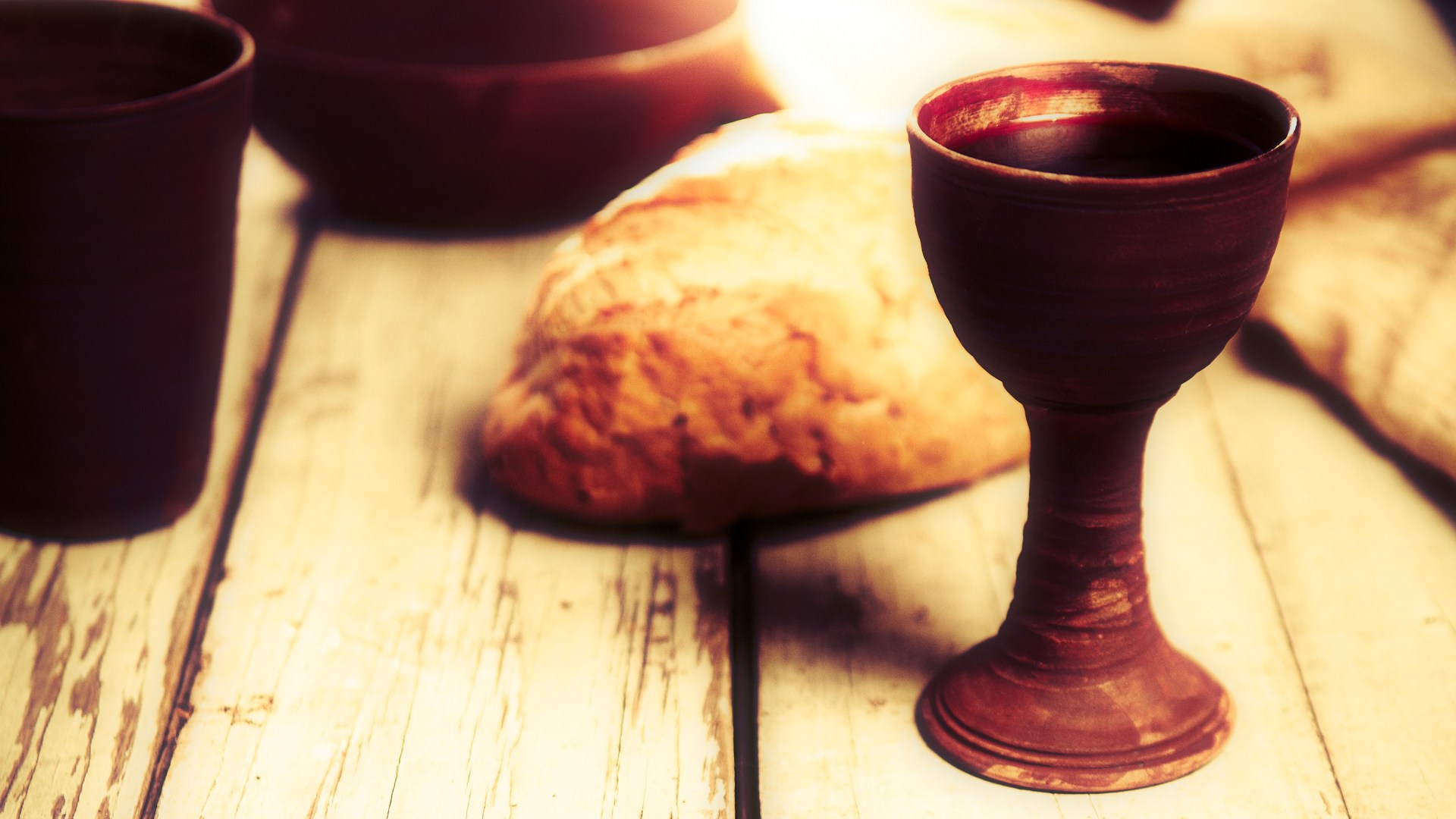In this series

At the Last Supper, Jesus told the disciples to “keep on doing this as my commemoration.” But after Jesus had left them, early Christians recognized that the supper Jesus shared with his disciples had indeed been his last, and thus was unique. The conundrum was: how do we keep on doing an unrepeatable event?
For instance, if, as seems likely, the Last Supper was a Passover meal, or seder (which means “order of service”), early Christians wondered if they should “do this” only once a year at Passover. Were they to obey his command literally only once a year, according to Jewish tradition? But that would have tended to keep them effectively within Judaism. This solution would have obscured the uniqueness of Jesus and wiped out the reality of the new era Jesus had promised.
On the other hand, if they were to observe the meal more often than annually, how should it be done in a non-Passover format?
The early Christians soon realized they were going to have to be liturgically creative, even daring, if they were to keep on doing an unrepeatable event.
From Sabbath to Sunday
The earliest church decided to adopt a non-Passover meal format that could be observed any time and as often as necessary for the good of the infant church.
Such a format lay close at hand: in the weekly meal held in Jewish homes each Friday evening to hallow the beginning of Sabbath. The Christian meal, though, no longer emphasized Sabbath themes, but Sunday, with its themes of resurrection and a new era in the Messiah, who had consummated both Passover and Sabbath.
Thus, the weekly meal structure was taken from Judaism, but the contents were Christianized and the meal moved to Sunday. This resulted in the first “liturgical rule” for Christians: Lord’s Supper on Lord’s Day. With this step the Last Supper of Jesus modulated into the Eucharist of the church. It was the first way new wine was being poured into old bottles as the earliest Christians strove to obey the Lord’s command.
From Blessing to Thanksgiving
In addition, the Jewish prayers over the bread and cup were reworked. The words changed from “blessing” God for food and creation to “thanking” God for revelation in “Jesus your child.”
This verbal shift begins in the New Testament. In Matthew 26 and Mark 14, Jesus is shown “blessing” (NRSV) the bread; in Luke 22 and 1 Corinthians 11, he gives “thanks.” The shift is complete by the time of the Didache (a Christian document with sections composed about A.D. 60), especially when we compare its prayer formulas with those of the Jewish Seder.
For instance, at the Jewish Sabbath meals, the first of three short prayers said over a cup of wine mixed with water at the conclusion of the meal reads:
“Blessed are you, Lord our God, King of the universe, for you nourish us and the whole world with goodness, grace, kindness and mercy. Blessed are you, Lord, for you nourish the universe.”
The corresponding prayer in the Didache reads:
“We give thanks to you, holy Father, for your holy Name which you have enshrined in our hearts, and for the knowledge and faith and immortality which you have made known to us through Jesus your child; glory to you for evermore.”
Indeed, in the Didache the entire Christian meal is seen as a eucharist (Greek for “thanksgiving”): “About the Eucharist, eucharistize thus.…” The Jewish form remains; the content and vocabulary are new.
As one Jewish scholar has noted, ancient Jewish prayer protocol tended to “bless” God for creation, “thank” God for revelation, and “petition” God for redemption. Thus, when early Christians employed thanksgiving language in their meal prayers, they were highlighting Jesus as the revelation of God.
This early example of liturgical creativity was to be faithfully followed by all the Christian churches for the next fifteen centuries, and is still observed by Roman Catholics and the Orthodox. In recent decades the emphasis on giving thanks has been recovered in the Communion prayer in some churches of the Reformation.
The Waning of the Meal
It is clear from the New Testament that the Last Supper did not merely contain a meal but was a meal. It was Jesus’ custom to impart, especially to those closest to him, his gospel while dining with them. Even after his resurrection he reveals himself to two discouraged disciples on the road to Emmaus “in the breaking of bread” (Luke 24:13–35), and to others by the Sea of Tiberias at breakfast (John 21:1–29),
The primitiveness of the Didache is evident in that it simply presupposes a meal. During the meal, eucharistic prayers are arranged after the pattern of the Jewish Sabbath meal. Before the meal, thanksgiving prayers are said over an initial cup of wine and the broken bread. After the meal, the three-fold thanksgiving prayer is said over a final cup of water mixed with wine (the “cup of blessing” mentioned by Paul, using the Jewish name for it).
But already in 1 Corinthians 11, Paul chastises the Christians at Corinth for becoming greedy and drunk at the Supper. There can be little doubt the meal was gradually separated from the prayers because such unedifying behavior recurred.
When the meal was moved out from between the short prayers (over broken bread and over the final cup of wine and water), these two prayers were set back to back, and in their original order: bread first and then the cup. The immediate disadvantage was that the observance became so brief as to be almost negligible (the Didache prayers can be said slowly in about thirty seconds).
This may well have been a central reason for expanding the originally brief prayers to one larger and more rhetorical. This prayer eventually included a remembrance not only of the Last Supper (which Didache’s prayers surprisingly do not allude to) but of all salvation history—from Genesis to the life of Christ to the present. We clearly see this development in early-third-century eucharistic prayers from Syria, Egypt, and Italy. By the end of the fourth century, the unified prayer had grown to many pages, as one can see in the Syrian Apostolic Constitutions.
What Happened to the Meal?
The meal portion of the primitive Eucharist did not disappear, however. It migrated elsewhere in the life of the Christian community. The Apostolic Tradition of Hippolytus (c. 220), for example, describes a formal meal, endowed by someone of the community and supervised by the bishop and other clergy. The meal was held to provide religious instruction and charity (it helped feed the poor).
Hippolytus was careful, however, to distinguish this meal, which he calls “the Lord’s Supper,” from the Eucharist, which he calls “the Oblation.” The unbaptized catechumens could attend this Supper—as long as they did not sit at the table with the baptized—but they could not attend the Oblation.
The table talk at the Supper was to be on religious subjects and conducted by the bishop, the chief teacher of the church, or in the bishop’s absence, by a presbyter or deacon. Should no clergy be present, “blessed” bread was not to be given to the baptized, because only clergy could invoke such a blessing.
The Supper, which later authors sometimes call an agape, or love feast (although Hippolytus never uses either term), was tightly disciplined to avoid scandal. Hippolytus, like Paul, cautions against excess at the Supper: “But when you eat and drink, do it in good order and not unto drunkenness, and not so that anyone may mock you, or that he who invites you may be upset by your disorder.”
Eventually, this meal appears to have died out, at least as a regular feature of the church’s common life. For one thing, agapes and meals held in cemeteries to honor the dead (refrigeria) sometimes became riotous and even dangerous, especially after dark (urban crime was no less a problem then than now). For another, the church found other ways to dispense charity and religious instruction.
As churches grew and settled into routine, full-time offices developed to deal with such needs in more efficient and “professional” ways. In the urban church of Rome, for example, a system of charity distribution centers known as diakonae (“deaconries”) was established in poor neighborhoods and among the docks and warehouses along the Tiber River. In addition, academies for religious instruction were begun in Egypt in the late second century, and as the number of converts increased, so did the need for more adequate preparation for baptism. These institutions gradually displaced the Lord’s Supper as the preeminent structure for providing charity and religious instruction.
The Need for Fellowship
But the serious need for Christian fellowship that the Supper, or agape, helped fill did not fade. Indeed, as the churches grew into urban settings, the intimate fellowship of the earlier, smaller communities must have seemed imperiled.
This was one reason some Christians withdrew into smaller groups of like-minded persons where fellowship and the common life could more easily be pursued. In fact, the period of the early church’s greatest growth and urbanization (the third to sixth centuries) is also the period when the great monastic rules were composed.
In the Rule of Benedict, for instance, the common table was less a means of nutrition than it was a sort of Lord’s Supper. The monks broke their fast around midday by receiving Holy Communion from their spiritual father, the abbot, and then went straight to the common table. The Communion and meal form one unit.
Today the eucharistic meal continues to spill over its historical forms to pervade the lives of Christians, doing so every time we approach any table in faith. And the agape, or love feast, aspect of this supernal fellowship with God in Christ lives on wherever two or three gather in Christ’s name.
Dr. Aidan Kavanagh is professor of liturgics at Yale Divinity School and author of On Liturgical Theology (Pueblo, 1984).
Copyright © 1993 by the author or Christianity Today/Christian History magazine. Click here for reprint information on Christian History.












